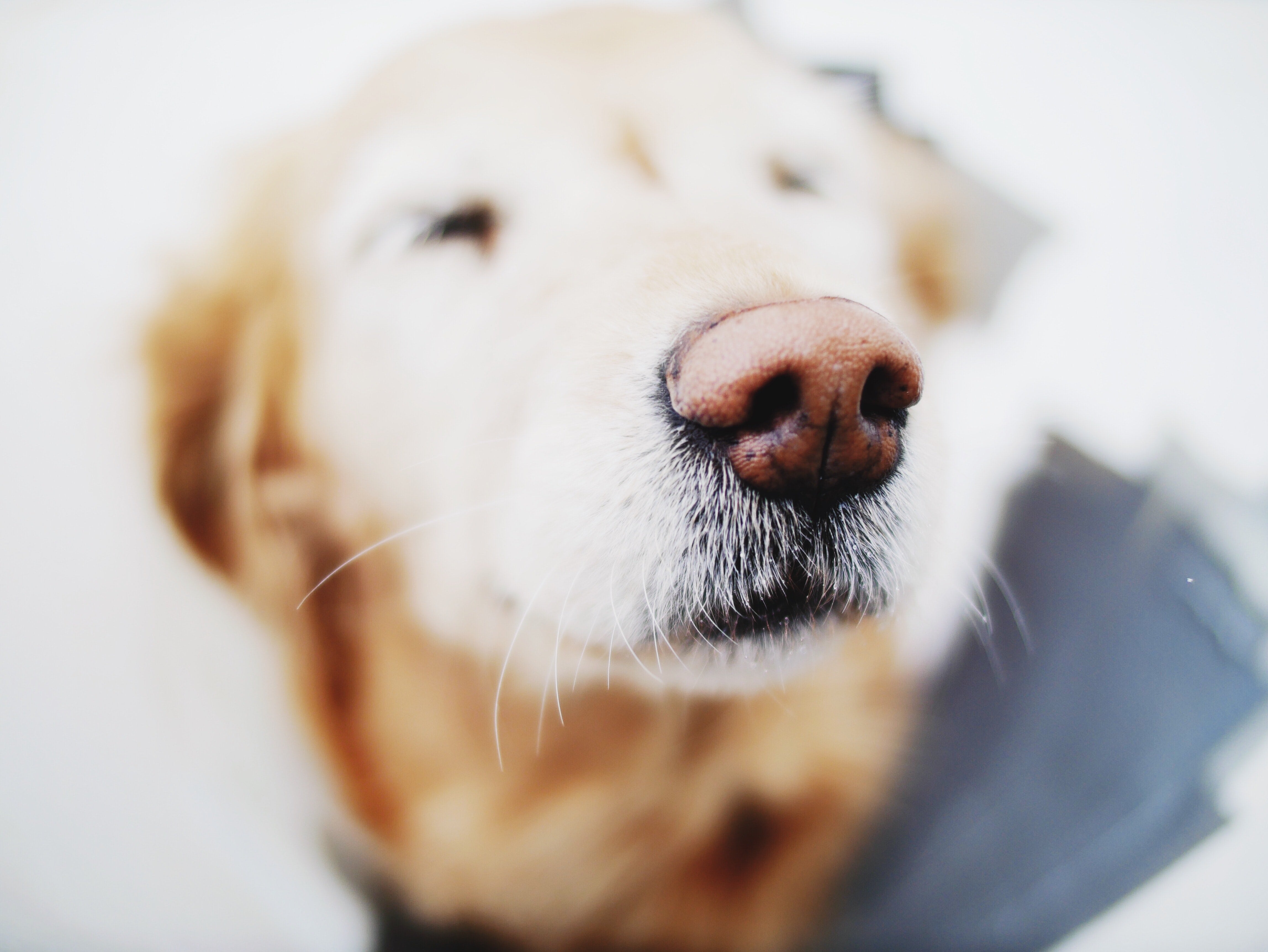It’s a well known fact that dogs have a strong sense of smell, as evidenced by the frequent stop-and-sniff sessions during those daily walks. Dogs have even been recruited to use their impeccable sense of smell to do the jobs that humans are simply incapable of, such as drug-sniffing or tracking down missing persons.
A canine’s sense of smell is so much more than simply identifying surrounding scents. In fact, scent is a dog’s primary form of communication. So, exactly how strong is your dog’s sense of smell?
The Nose Knows
Humans have around six million olfactory receptors, which pales in comparison to a dog’s 300 million. This means that a dog’s sense of smell is 10,00 to 100,00 times more acute than a human’s. James Walker, former director of the Sensory Research Institute at Florida State University, says that if we were talking about vision, it would be as if a dog could see something 3,000 miles away that a human would only be able to see a third of a mile away.
Fortunately, a canine’s enhanced sense of smell means that dogs experiencing vision loss will have a much less difficult time adjusting to their new world than a human would.
Of course, we’re not talking about vision. While humans use our eyes to take in two slightly different views of the world which our brain puts together into one image, dogs use their nostrils to do something similar. Each nostril picks up different odors, helping your pooch determine the exact location of the smelly scent in question.
In fact, dogs can even use their sense of smell to identify objects that are invisible to humans. We are constantly shedding skin cells—50 million per minute—that are invisible to the human eye. To a dog’s nose, though, these are very “visible.” Every human has an individual smell, unique like a fingerprint. Even if you’ve started using a new shampoo or perfume, your pup will have no problem recognizing you. To him, you’re perfectly, wonderfully smelly, with a signature odor that can’t be masked.
Not all dogs are created equal, though. Some dogs have a stronger sense of smell than others, and a superior sense of smell often coincides with a high prey drive. For example, Hounds have the strongest sense of smell, followed by working breeds such as German Shepherds and Labradors. Dogs with short snouts, like Pugs and French Bulldogs, may not be able to smell to the same extent.

Communicating Through Smell
While humans typically use our words to communicate and our eyes to take in the world around us, dogs rely more heavily on body language and smell.
Dogs rely on their sense of smell using the Jacobsen’s organ to find a mate, locate their family members, seek out food, and avoid predators. You’ve likely witnessed your pooch engage in a heavy sniffing session when he meets another dog. Dogs greet each other through sniffing, but it’s so much more than a simple “hello.” Using their sense of smell, dogs can learn each others’ sex, age, health, recent meals and encounters, and even their mood.
When a scared or ashamed pooch lowers his tail between his legs, it’s actually related to smell: the lowered tail can cover up some of the scent released from anal glands, making him less noticeable to others. On the contrary, a dog with a raised tail may be trying to release more of his smell in order to establish dominance.
Dogs can even sniff out diseases and detect human emotions through smell. If you feel sick or down in the dumps and you notice your furry best friend acting more loving than normal, it’s not just a coincidence—dogs can smell hormone production, rises and falls in blood sugar levels, and even changes in brain chemicals. Some dogs are specifically trained to work as emotional support or service animals; even without that training, though, your pup is able to naturally pick on moments when he may feel the need to provide you with some extra support and affection, just as you would do for him.
Encouraging Exploration
Because your dog uses his nose to explore the world around him, help him “exercise” his sense of smell by providing an enriching environment and regularly taking him to new locations so he can explore and expand his sense of the world.
When he stops to sniff a spot on one of your daily walks, don’t tug at the leash to pull him away. These spots are often urine markings, or “messages,” from other dogs. Instead, allow him to spend some time reading those messages and perhaps even leaving his own. If his frequent stops become a bit too annoying, though, you can try teaching the “leave it” command so he knows when it’s time to move on; you can even teach a “go sniff” command as a reward so he knows when he’s free to explore.
Many dog owners are familiar with the idea that a damp nose is a sign of a healthy dog. This dampness is actually incredibly valuable, because it helps scent particles to stick to the nose more effectively. If your dog’s nose is drier than it should be, it may be a sign of skin allergies. PetHonesty’s Allergy SkinHealth Chews can help to heal skin issues and boost the immune system from the inside out.
Sources:
https://www.carecredit.com/vetmed/article/how-well-can-your-dog-smell
https://smallpetselect.com/how-strong-is-a-dogs-sense-of-smell/
https://www.dogster.com/lifestyle/dogs-sense-of-smell-facts
https://vcahospitals.com/know-your-pet/how-dogs-use-smell-to-perceive-the-world
https://www.akc.org/expert-advice/training/why-does-my-dog-sniff-everything/














